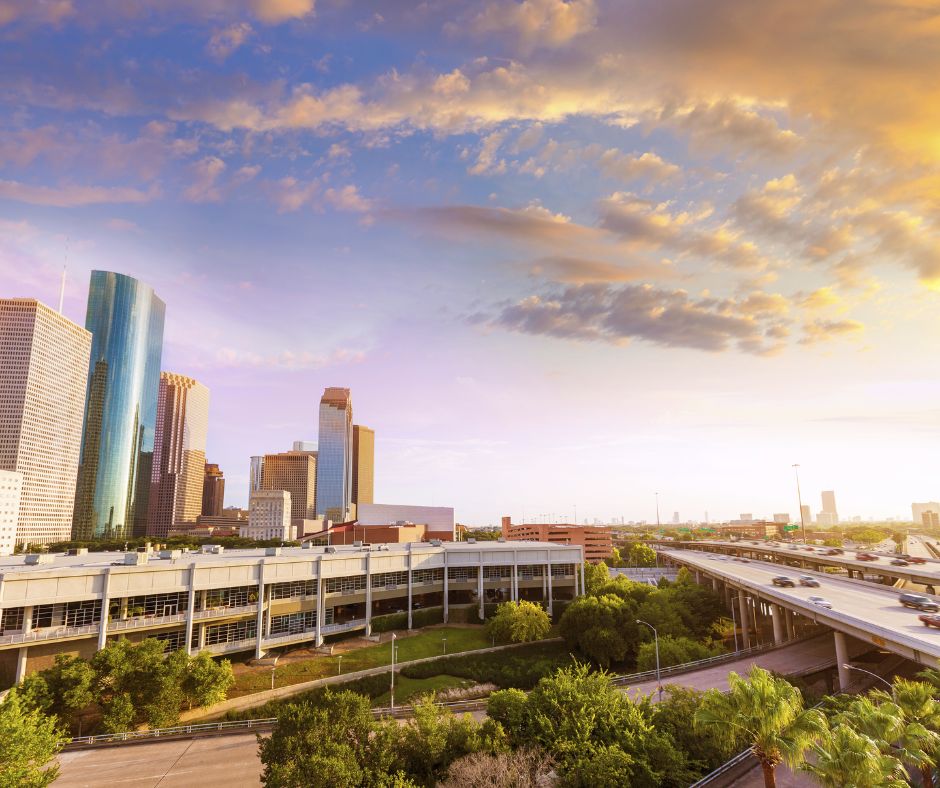Hurricane Harvey's Lasting Impact on Houston
Published Aug 26, 2022 by Brina Morales
Five years ago, Hurricane Harvey ravaged Greater Houston and the Texas Gulf Coast. Harvey hit our region as a storm, dumping as much as 60 inches of rain in some areas over four days, producing $125 billion in damages, and killing 36 people in Harris County alone. Harvey's devastation transformed Houston, bringing the community and leaders together to plan for a better tomorrow. Here are four takeaways as we reflect on the anniversary.
Business and civic leaders continue to push for projects that create a more resilient Houston.
Since Harvey, the City of Houston has launched several initiatives, including Resilient Houston, a framework to focus not only on recovery but long-term stability. Despite funding challenges, both the city and county are working on green infrastructure solutions and other innovative options including turning neighborhood parks into stormwater detention basins, creating wetlands, building rain gardens, buying out properties in flood plains, building flood resilient multi-family apartments, enacting new building codes for new home construction and more. The Harris County Flood Control District is also exploring a $30-billion network of underground stormwater tunnels to alleviate flooding. In the fall, Houston Community College will launch new courses focused on building a resilient workforce to prepare the region for future disasters.
Downtown Houston was forever changed.
Following the damage caused by Harvey and pandemic-related shutdowns, Downtown is once again humming, but it came at a cost. It took 13 months for the Wortham Center, the second-largest performing arts center in the nation, to reopen after the storm. The Harris County Criminal Justice Center remains under construction after floodwaters damaged the 20-story building. Some businesses along Buffalo Bayou never reopened, while others adapted to the possibility of another flood, including what’s now known as McIntyre’s Downtown, the former iconic Spaghetti Warehouse. Solutions to protect businesses and homes in the downtown area and along White Oak and Buffalo bayous are in the works, including the North Canal Project, which is in the design phase with construction scheduled to begin in 2024.
Families are still rebuilding.
According to SBP Houston, a long-term disaster recovery nonprofit organization, thousands of families are still trying to rebuild their homes and lives five years after Harvey. The storm damaged more than 150,000 homes in Harris County alone.
"Our goal is to stay here until every family impacted by Harvey has a safe, sanitary, secure home to live in,” said Kaitlyn Perez, SBP’s community engagement manager.
Since 2017, SBP and its partners have helped rebuild homes for 830 families impacted by Harvey. Ms. Claudette is one area resident SBP says recently moved back into her home after spending the past five years struggling to find financial help to repair damages. She leaned on several organizations, including SBP and Habitat for Humanity, to rebuild her home.
The disaster brought people together and continues to do so.
Harvey brought loss and devastation but also solidarity. Communities and residents banded together to support each other during and after the storm, which led to the birth of a phrase we still live by, Houston Strong. Houston has shown its resiliency, but the work continues.
Volunteers continue helping local families in need. In addition, the community has shown willingness to invest in flood mitigation efforts by passing the 2018 Harris County Flood Control District’s $2.5 billion bond program and the city's Build Houston Forward plan.
“Together, we’re focused on making Harris County stronger and more resilient for generations to come,” said Flood Control District executive director Tina Petersen in a press release. “We’ve made significant progress, and we know the need is still great, so we are treating each and every project with a sense of urgency.”
Flood mitigation is one of four key executive priorities for the Partnership’s upcoming legislative agenda. Learn more here.
 The Houston Report
The Houston Report




















